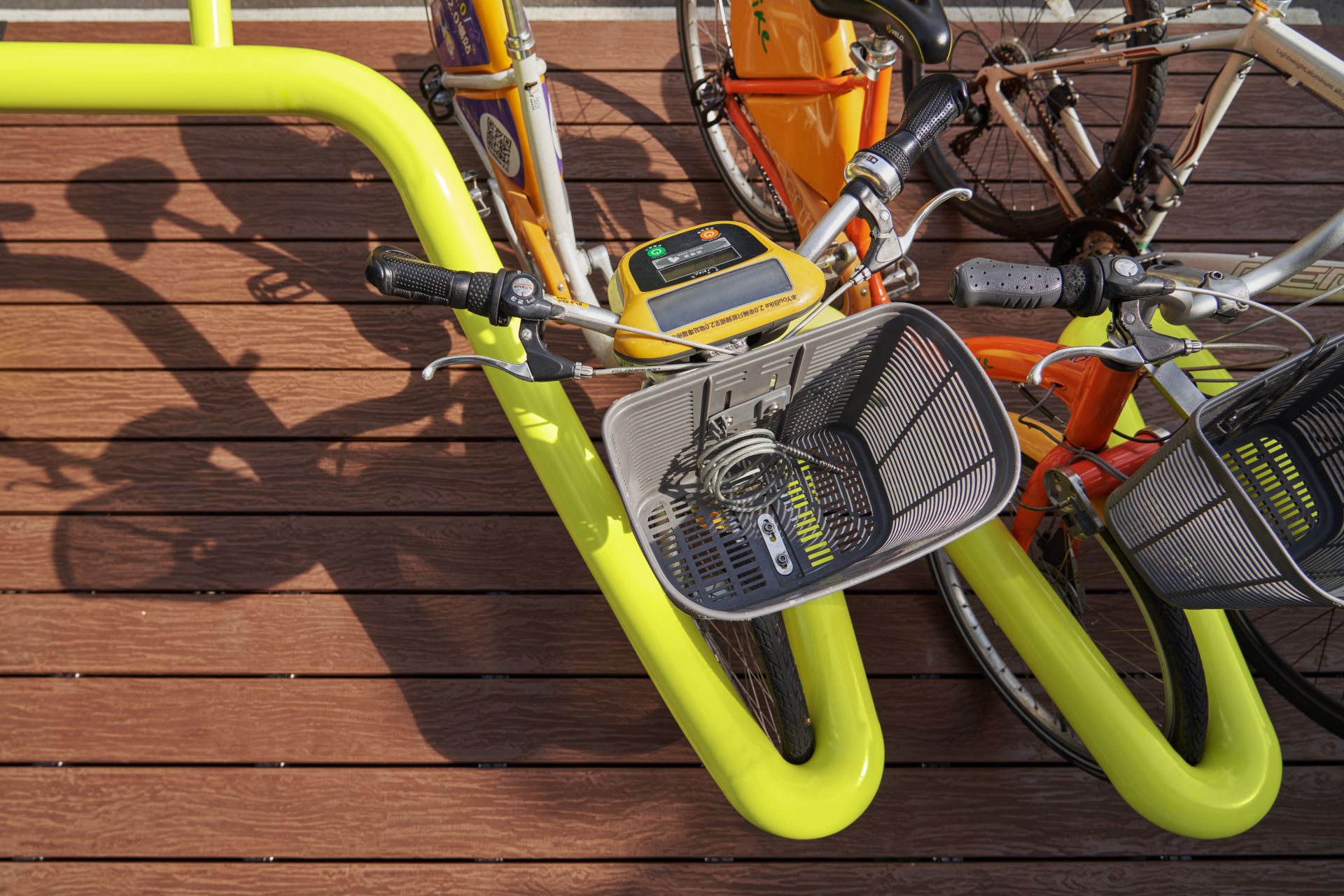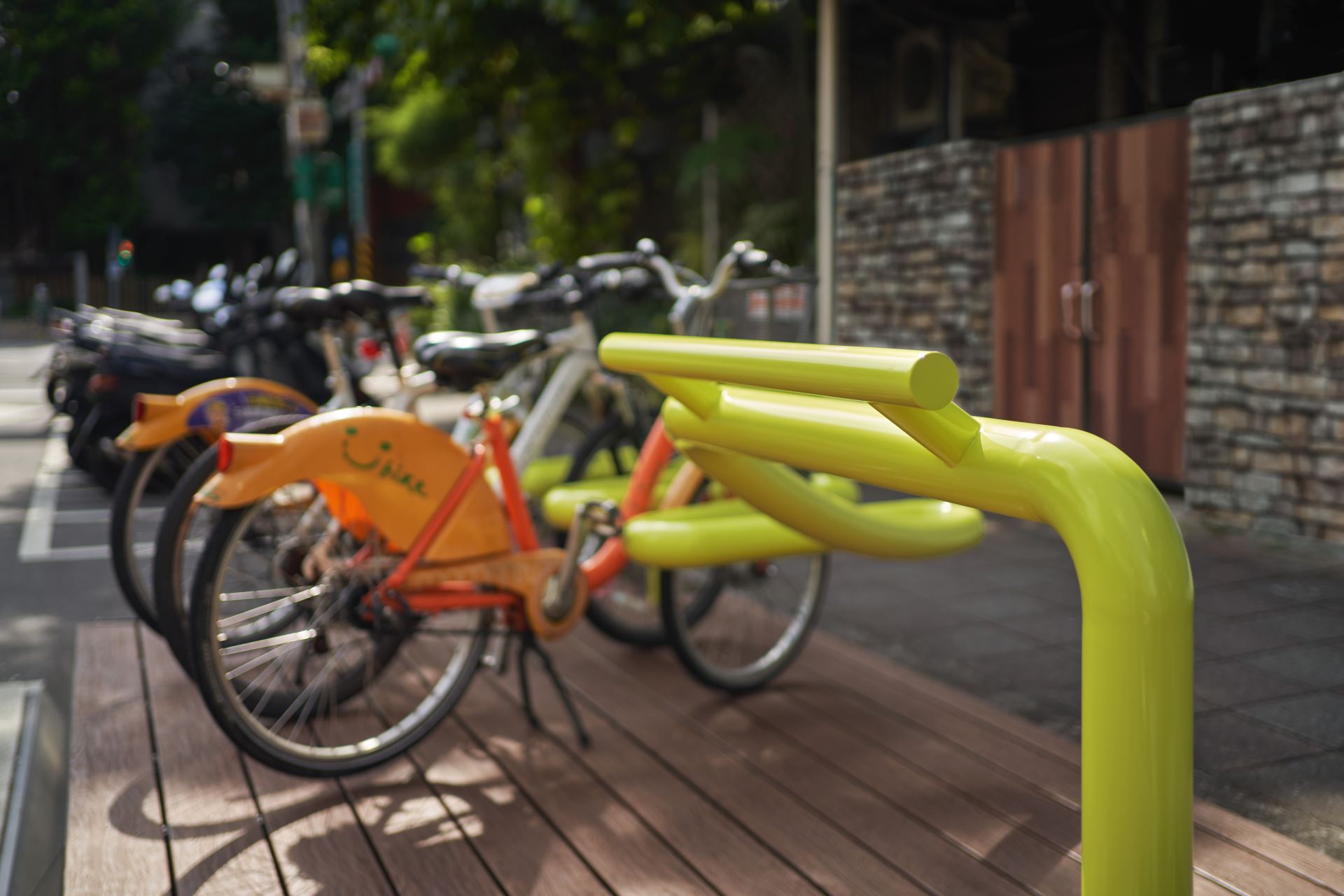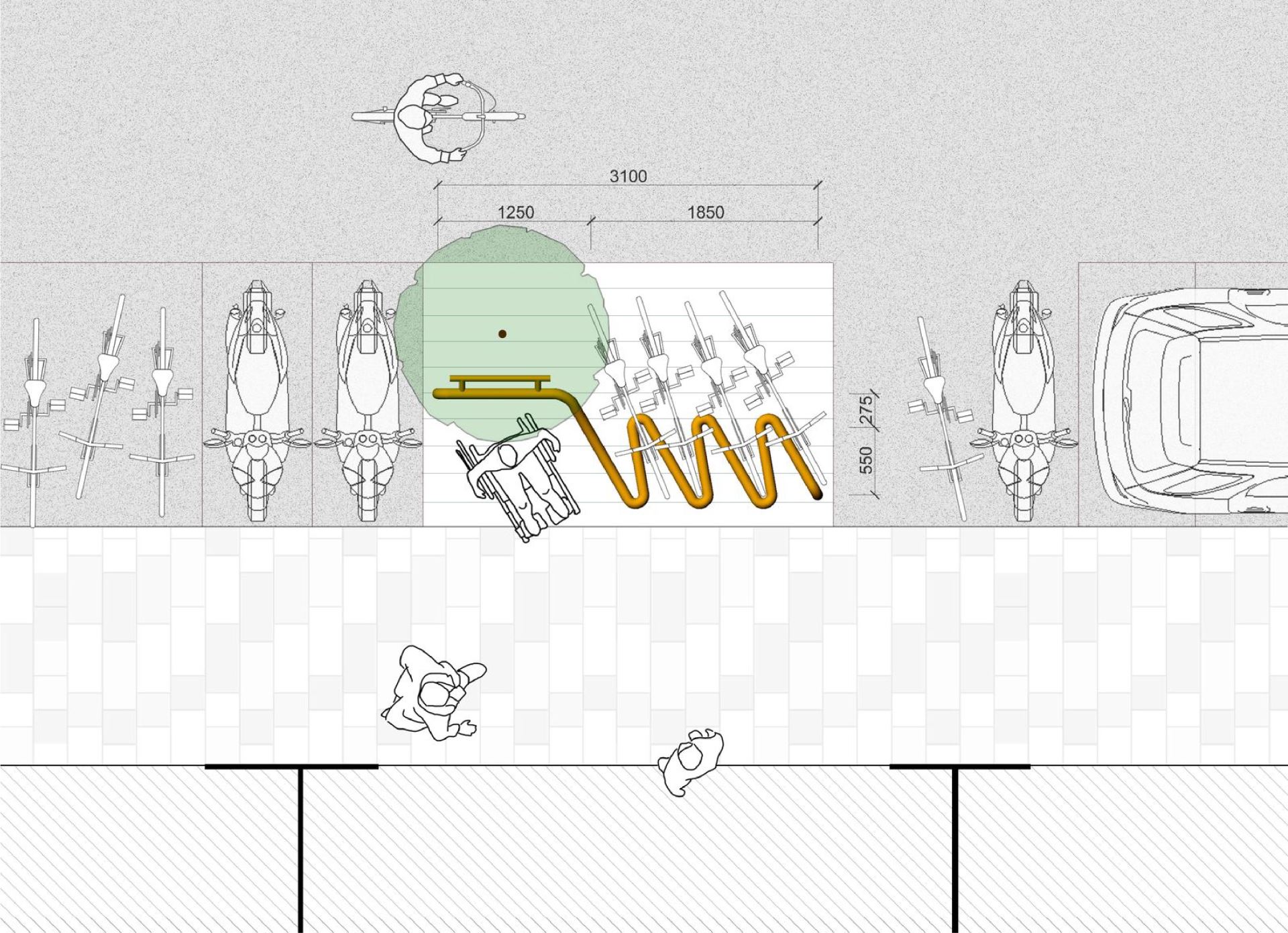




【獎項 Prizes】銅獎 Bronze Award , 廠商贊助獎|Sponsor's Award (遠東百貨股份有限公司 FAR EASTERN DEPARTMENT STORES)
【國家或地區 Country / Region】台灣 Taiwan
【設計團隊 Group / 設計師 Designer】 鄭采和 Tsaiher Cheng, 黃丹怡 Tanyi Huang
【作品介紹 Description】
鄭采和+黃丹怡在臺北市通用設計基金會舉辦的城市設計大賽獲得金獎的殊榮 : 在一個 375cm寬、55cm深的鐵管彎折下,就可以做成這組結合自行車停放、座椅、路圍、樹圍功能的通用設計自行車架組TUBE RACK,非常適合臺灣的狹小人行道使用。它的停車功能除了一般的車輪卡進凹槽之外,在密度較高的街區,也可以用一高一低的停車方式,增加停車數量。除此之外,車架也設計成可依照不同路型的需求下: 單向使用或者雙向使用,以配合不同街區、路型的需求。
TUBE RACK在後續的都市公共空間落實中,參與了臺北市政府都更處 Open Green 社區營造計畫並與民生社區富錦里合作壯大團隊,在里長及社區的支持下,得與新工處、養工處、停車管理處、交通局進行以「都市設計」為基礎的協調性對話,最終在社區巷弄內的人行道路介面空間得以落實。 TUBE RACK採用通用設計的設計理念,也就是 ( 各種人都 ) 通通可以用的概念去重新翻轉街道。通用設計的七大原則 : 公平使用、彈性使用、簡易及直覺使用、明顯資訊、錯誤容許、省力性、適當尺寸及空間供使用,分別在這個案子得到完美的呈現。
完成年份: 2022
作品地點: 台灣台北市松山區三民路與三民路166巷巷口 (民生社區富錦里內)
設計者: 鄭采和、黃丹怡
攝影: Brian Su
Tsaiher Cheng and Tanyi Huang was encouraged by an urban design competition held by FUDE (Foundation of Universal Design Education) to create the concept of TUBE RACK, a bending steel tube structure with the dimension of 375 cm (length) by 55 cm (depth), enabling cyclists and pedestrians to park, lean, or sit on it.
Taiwanese streets are notoriously congested by traffic. The focus on car lanes results in narrow pedestrian paths and ambiguous bike path. Currently, bike lanes are installed in pedestrian paths where ever possible, instead of being given exclusive paths. This has caused many conflicts of use between pedestrians and cyclists.
TUBE RACK was created, after the designers went for a holiday trip in Tokyo, Japan. To the designers’ surprise: In Japan, even though the bike paths are installed in the pedestrian system like Taiwan (and not given exclusive paths, like the Dutch urban planning method),
cyclists and pedestrians each go their own way in very clear order without interrupting each other. Signages to separate the two are clearly installed in proper location as well as the use of different paving materials to separate cyclists and pedestrians.
TUBE RACK therefore engages in reconnecting the untamed urban space and improve the function of both bike lanes and sidewalks, reclaiming them with a friendly bicycle parking rack and a simplified urban bench function. Specially designed for Taiwanese narrowed pedestrian paths, TUBE RACK could be parked one-sided, or both-sided. Bikes could be parked in 2 different height levels to satisfy higher parking demands, if necessary. Lines by nature are the exemplification of fluidity, simplicity, and flexibility. Street order is therefore given by a curving steel tube defining the horizon, recognizable by its bright nature.
The realization of TUBE RACK in site was first confronted harshly by authorities, due to the fact that Taiwanese pedestrian paths are managed simultaneously by multiple city departments, so that any new design agreement will anyway be difficult to make: To take Taipei city as an example, the pedestrian paths are managed by the New Construction Office, Public Works Department. However, the landscape issues (plantations and trees) are managed by the Office of Road and Accessory Maintenance, Public Works Department. Parking issues are managed by the Taipei City Parking Management and Development Office, but illegal parking issues are managed by the local police office. Bike lanes are planned by the Department of Transportation. Last but not least, the design of urban furniture is supervised by the Department of Urban Development, Taipei City Government.
After numerous meetings and difficult negotiations throughout the years, the first set of TUBE RACK was installed in the Ming Sheng Community of Taipei City, with the strong support of the local ‵Fujin Village (富錦里)′ chief and local residences, in 2022. Throughout the local community engagement process, the notion of urban design has been used as a negotiation tool to communicate with diverse governmental bureaus, whom previously focus mainly on the engineering and management aspects of street environments, instead of an integrated urban design issue with diverse users involved.
The design of TUBE RACK follows the principle of Universal Design: the design and composition of an environment so that it can be accessed, understood and used to the greatest extent possible by all people regardless of their age, size, ability or disability. The 7 principles of Universal Design: equitable use, flexibility in use, simple and intuitive use, perceptible information, tolerance for error, low physical effort, size and space for approach and use, can all be found and presented in the design of TUBE RACK.
Year of Completion: 2022
Location: Fujin Village (富錦里), MingSheng Community, Taipei, Taiwan.
Design: Tanyi Huang, Tsaiher Cheng
Photography: Brian Su
Client (Concept phase): FUDE (Foundation of Universal Design Education)
Client (Execution phase): Taipei City Urban regeneration Office



